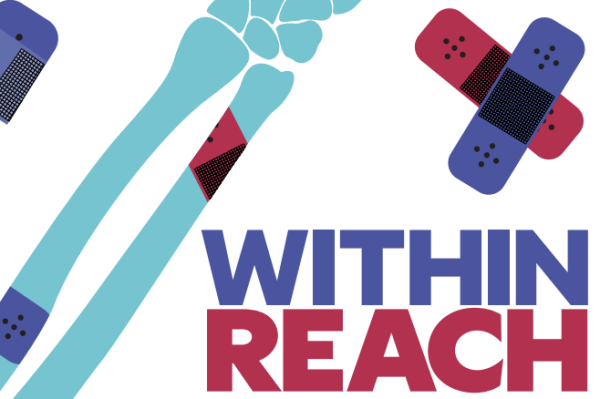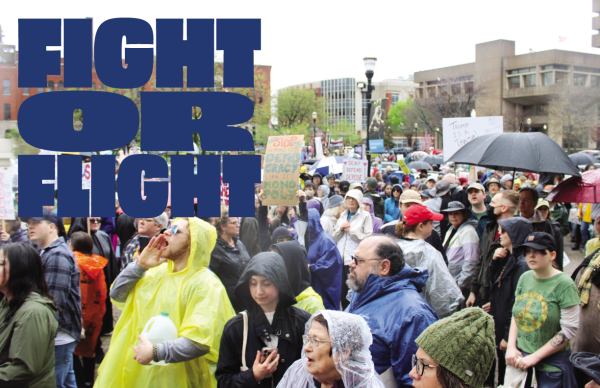The Silent Bias
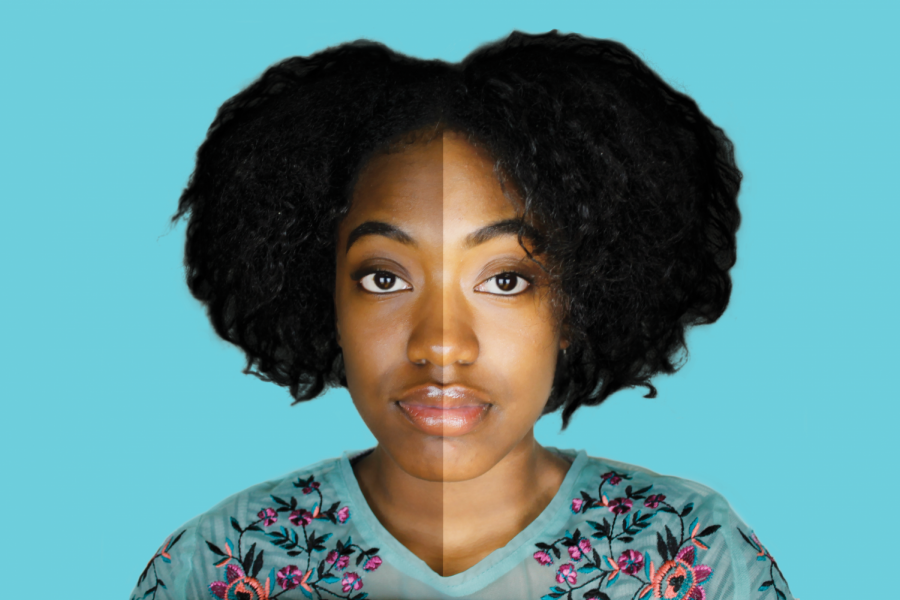
Throughout life, Faith Evanson, a 16-year-old junior at duPont Manual High School, has been haunted by one word: dark. Even when there’s background noise, she automatically tunes into this word.
“I naturally search for it,” Evanson said. “I just look around and assume people are talking about me.”
Her experience with the word began early with indirect whispers. But in first grade, Evanson was directly confronted with the darkness of her skin.
In her cluttered classroom, dozens of markers and coloring supplies covered the tables and floors. Crayons in hand, Evanson prepared to draw the light-skinned boy that sat in front of her. He did the same. Unlike her giggling partner, she was concentrated on her artwork. After a while, she was curious about his laughter and asked to see what he drew. But he kept the paper close to his chest.
When he did show her, she was faced with a blob of black crayon. The black hole strewn across the page sucked her in, and she couldn’t help but stare. For the first time, Evanson saw a reflection of herself from the outside, one that embodied darkness.
All of her frustration culminated into the question, “Is this me? Is this supposed to be me?” The boy laughed it off.
“When I was upset, he dismissed me,” Evanson said. “For the rest of the year, he wouldn’t let it go, and everyone thought it was so funny.”
Those moments of teasing culminated into hyper awareness of her skin color.
“I’ve always been the darkest person in the room,” Evanson said, “and it sucks that I had to realize it in first grade.”
This new awareness put the weight of alienation on the shoulders of her self confidence: “From the beginning of middle school and back, I always felt that if I were a little bit lighter that people would like me more.”
This desire to be accepted as beautiful in society’s rigid standards has constantly plagued youth of color. As a person of color, I noticed from a young age: we are forced to recognize the color of our skin causing us to carry an omnipresent awareness of our otherness.
At the time, Evanson did not know this suffocating societal pressure had a name: colorism.
What is Colorism?
Colorism is defined as the discrimination or bias against individuals with darker complexions, especially among those of the same racial or ethnic group.
After Pulitzer Prize-winning author Alice Walker first coined the word in 1982, colorism joined the list of society’s “-isms” — ideologies that use prejudice to establish dominance. Society has built a hierarchy of skin tones by honoring lightness and degrading darkness.
According to Calla Reed, a former JCPS student published in the peer-reviewed journal, Young Researcher, colorism is often unrecognized because its indirect nature presents itself as more “socially acceptable.” While racism comes externally through interactions with others, colorism is deeply rooted in communities of color most affected by racism. The internalized nature of colorism causes it to be less acknowledged in our society.
For example, when people tell a young girl “she’s pretty for a dark skin girl,” they see it as a compliment, but for her, the deep-rooted meaning is that dark does not equal beautiful.
In communities of color, we constantly associate darkness with such negativity that we begin to separate it from our notions of beauty.
As a Somali-American, growing up, I would hear phrases like, “pretty white skin,” and “oh, you got so dark,” and “don’t stay outside for too long.” These words culminated into a loss of connection with my skin, and built the idea that darkness stood opposite to beauty.
No matter our race or ethnicity, people can always see the color of our skin, a biological truth. Skin color is one of the many fixed characteristics that determine how individuals are treated in this society.
Roots of the Silent Bias
Margaret Hunter, a sociology professor who researches the effects of colorism and racial discrimination, explained colorism in the United States grew from slavery. On plantations, the slave masters built a hierarchy of skin tones to further divide the African-American people. When the white slave masters exploited and raped the enslaved black women, they created a new, biracial group of people. Although the slave owners did not consider their offspring to be equals, their lighter skin did provide them privileges unavailable to others. They were able to work indoors while the darker-skinned slaves labored outdoors in the scorching sun. With the development of these color divisions, the U.S. deeply rooted colorism into its society.
Similarly, Hunter found in many countries around the world, “colorism takes root from European colonialism.” On the highly colonized continent of Africa, communities formed a deep hatred of their dark skin. In Latin America, the white Europeans used the fairer toned “mestizos” to subjugate the natives and the African slaves. Within South and Southeast Asian communities, people generally associate lighter skin with their colonizers who represented high-class and beauty. Left over from the legacy of colonialism, intrusive advertising of European aesthetics has encouraged these people to lighten their natural skin tones.
Its Shade on Society Today
In advertising, colorist images sometimes appear alongside products. Whenever women of color are represented, they are often “whitewashed,” with lighter makeup, straighter hair, light-colored contacts, and thinner bodies. For example, L’Oreal had an ad in 2008 featuring a picture of Beyonce that was excessively lightened through Photoshop— the color of her skin had been washed away.
Many companies use this marketing to promote colorist ideals by branding their products as skin-lightening or brightening, rather than the reality, damaging skin-bleaching. Whitenicious, among these companies, is based in Nigeria where 77% of women use skin-bleaching products. One full-body skin-lightening cream by Whitenicious costs $800, just a little under the average rent price in Louisville. In late 2018, the reality TV star Blac Chyna visited Lagos, Nigeria to promote her skin-lightening cream.
Deeqo Ahmed, a 29-year-old Somali-American, has found this bleaching mentality engrained in both Africa and its diaspora.
“By showing this dangerous kind of thinking, Blac Chyna is getting money from the harm of the African people,” Ahmed said. “We have struggled with this hatred, and people just take advantage of that.”
When she arrived in Louisville as a teenager, Ahmed grew up in the diverse immigrant and refugee community. She shared the experience of adjusting to American life with them.
“There was this pressure in the people,” Ahmed said. “The pressure to change and fit in.”
For some youth in the African diaspora, their skin can be confining, so they turned to skin lightening to feel accepted.
“All my friends wanted to be light skinned and they would always tell me to try it, too,” Ahmed said. “So, one day, I thought I should give it a shot.”
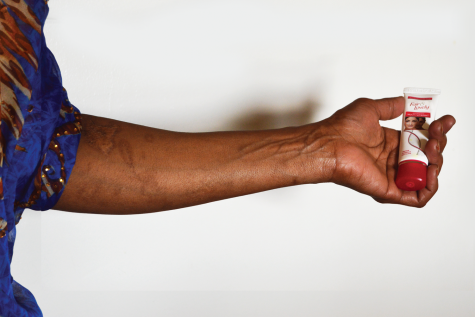
However, instead of immediately applying the white cream to her sensitive face, Ahmed rubbed it onto her arm.
“I was careful because I saw their scars,” Ahmed said.
After only one day of its application, the cream began eating away at her skin like a fire. Ahmed gained a new scar. The darkened splotches embedded in her skin are a reminder of the words that once hurt her.
“I was really terrified. I would never ever try it again,” Ahmed said. “It is not worth it for them to go through that kind of pain — all over your body to be different colors and your actual skin to be peeling off.”
Skin bleaching products usually contain hydroquinone, corticosteroids, or even mercury. According to the World Health Organization, these ingredients are linked to health risks such as scarring, skin thinning, skin discoloration, kidney damage, and birth defects. In the U.S., injuries from skin bleaching are relatively underreported and under-researched.
In countries where people of color are the main demographic, companies advertise skin bleaching to profit from people’s self-hatred.
Without the regular inclusion of darker-toned actresses in the traditional media, the trend of dark not being beautiful inevitably feeds self-hatred. Although there have been strides to have a more diverse screen, lighter skinned actresses dominate the television and film industries.
At the Beautycon festival in 2018, singer and actress Zendaya used her platform to expose the colorism in Hollywood.
“I am Hollywood’s acceptable version of a black girl and that has to change,” Zendaya said. “We’re vastly too beautiful and too interesting for me to be the only representation of that.”
Usually, whenever there is a darker-skinned African-American character, Hollywood casts a lighter toned actress. For example, in the movie, “The Hate You Give,” the casting of Amandla Stenberg was controversial because she has a lighter complexion than the darker-skinned character, Starr Carter.
Often overcast by a lighter-skinned lead, darker characters fall victim to negative stereotyping. Media brands the darker women to be “loud,” “angry,” and sometimes, “unfeminine.” To society, these women will always be the “angry black woman” when she expresses her opinion.
According to Marian Vasser, Director of Diversity Education & Inclusive Excellence at the University of Louisville, this destructive generalization causes black women to become somewhat complacent with how society treats them.
“Do you not think they have a right to be angry?” Vasser said. “And is it really anger? Or, is it because as a black woman, I am always having to prove my worth? I’m always having to speak louder because I am used to not being heard.”
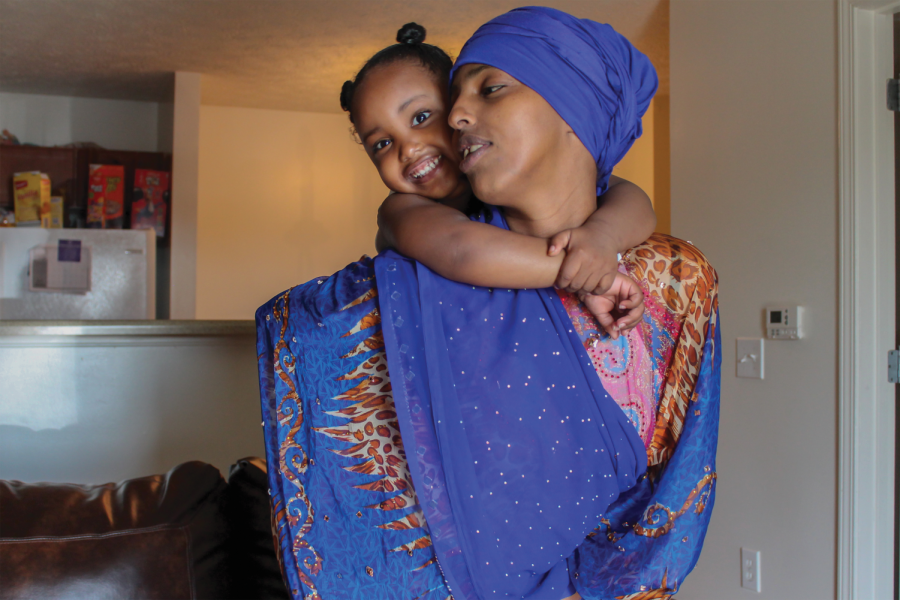
The Youth
Due to media reinforcement of colorism, stereotypes can be easily internalized by viewers. Not only do media integrate stereotypes into the minds of the masses, but they are psychologically and socially damaging for people of color as well.
Media influence attitudes about race from a young age, especially when direct contact with a group is limited. Through film and television, children can learn about what they may not have personally experienced.
Children are impressionable and more likely than adults to perceive the media’s depiction of the world as reality. So, the damages of these stereotypes could be subconsciously carried throughout their lives.
For Ryane Jones, a 17-year-old junior at Sacred Heart Academy and the founder and president of their Black Student Union, colorism was unavoidable as a child.
“When we’re younger, we don’t know what we are talking about. We say what we hear from our parents or from the media,” Jones said. “As children, I feel like what we hear and what we say is so important into how we develop and the ideas that we form.”
This idea was tested by two African-American psychologists, Kenneth, and Mamie Clark, who studied children’s attitudes toward race through dolls. The well-known study built a precedent for studies on the effects of colorism on children.
They asked children, both black and white, to select a doll, the “white” baby or the “black” baby, in response to questions. Over and over, the children, as young as five and six, preferred the lighter-skinned dolls referring to them as always prettier, always smarter, and always nicer.
Constantly, we are exposed to the predominantly white media which foregrounds biased ideals. The negative responses from the black children towards the dark-skinned doll verified that they held internalized racism. At a young age, colorist attitudes infiltrate children’s minds, causing them to perpetuate those ideals among their peers.
“In elementary school, other kids would say things like burnt biscuit, or just burnt,” Evanson said. “It was like the mantra of colorism.”
From this constant teasing, children with darker skin are more likely to have lower self-esteem as they grow older. As a result of colorism, African-Americans reported poorer mental health when they were discriminated against by their black peers than when faced with discrimination from white people.
“I would say there becomes this kind of feud,” Jones said. “And, it hurts us more than we realize.”
The development of this tension between light and dark tones creates an unbroken cycle that constantly breeds colorism in minority youth.
The Movement to Acceptance
The double-edged nature of social media allows it to be both a platform used to fight colorism, and one used to spread colorist ideas. On social media, the division in the African-American community is reflected in the hashtags like “#teamlightskin” and “#teamdarkskin.”
The recognition of this disunity has pushed many people of color to join movements, like “#blackgirlmagic” and “#blackboyjoy,” as a way to celebrate every individual.
“Now the word is out there that black has always been beautiful and that darker skin is beautiful,” Jones said. “We are all beautiful together no matter how light or dark your skin is.”
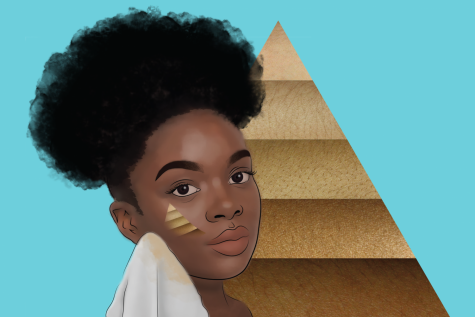
From this powerful conversation, the appreciation of dark skin beauty on social media has begun to translate into traditional media — television, film, and magazine.
Today, there are more notable dark skin models and actors scoring lead roles, like Lupita Nyong’o, Mahershala Ali, and Viola Davis. For Faith Evanson, the rise of women who challenge the social norms of colorism has been inspiring.
“Lupita Nyong’o. She embraces her blackness, and I find that so powerful,” Evanson said. “I find it incredible that she doesn’t sacrifice any part of herself in front of the media.”
The exposure of individuals proud of their dark skin starts the development of a self love in the youth of color. Vasser believes that the journey to loving yourself is difficult because from a young age we have only learned how to hate ourselves.
This change will not happen overnight because the building of that resolve begins with us and no one else. In this self-growth, Jones finds that small affirmations play a huge role. By looking at yourself in the mirror and acknowledging that you’re beautiful, you are beginning to embrace your beauty.
“I think that no matter what the standard is, create your own standard,” Jones said. “And your standard should be yourself.” •
Donations are collected through The Publishers, duPont Manual High School's booster club for J&C. On The Record relies completely on sponsorships, advertisements, and donations to produce and distribute each issue. Please consider donating to our cause, and helping the student journalists of OTR amplify youth voices for years to come.


